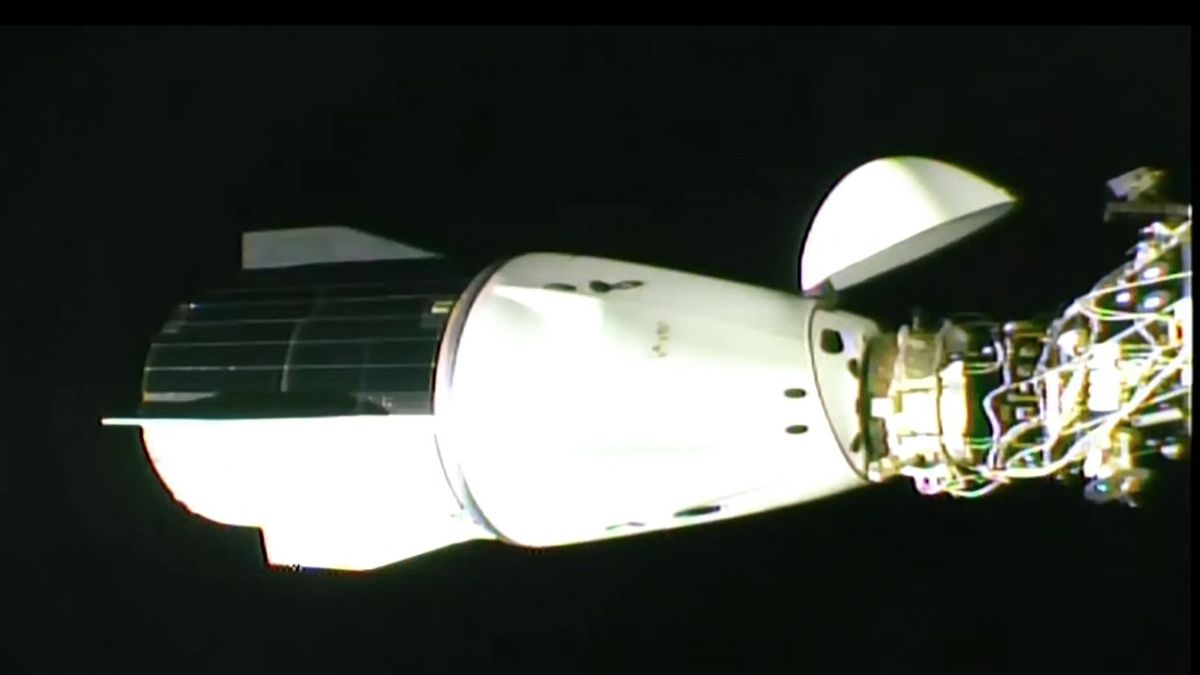By Cassidy Morrison Senior Health Reporter For Dailymail.Com
22:17 15 Nov 2023, updated 22:24 15 Nov 2023
- Molecules called endocannabinoids have been found to affect pain regulation
- Endometriosis, caused by uterine tissue growing outside the body, is painful
- READ MORE: Doctors eye new drug that could end monthly agony for women
Cannabis could help the millions of women suffering from endometriosis combat the pain associated with the debilitating condition.
Endometriosis is a chronic disease that affects 6.5 million women in the US. It causes extreme pain during periods and sex, as well as chronic pelvic pain, abdominal bloating, nausea and infertility.
There is currently no cure and treatment, aimed at controlling symptoms, includes invasive surgery.
Research has suggested the microbiota – collection of bacteria in the gut- and neurons called endocannabinoids bind to receptors in the central nervous system that play a role in the development and progression of endometriosis.
Endocannabinoids, as well as cannabinoids, which come from outside sources like ingesting marijuana, have pain-relieving effects that suppress the processing of pain signals to the brain.
The gut constitutes part of the endocannabinoid system (ECS), which has been found to influence pain levels, making it a promising target for treating chronic pain associated with endometriosis, researchers said.
An imbalance of these three things can trigger inflammation and increase the presence of bad bacteria in the body, which contributes to the worsening of endometriosis.
In the female reproductive organs, endometrial tissue called the endometrium lines the uterus. The body generates a new endometrium with every menstrual cycle to prepare for a fertilized egg. But in people with endometriosis, that tissue grows outside of the uterus.
As the tissue builds up, it increases the risk of painful cysts, scarring, inflammation, and tissue that connects organs and binds them together.
This tissue build up can block fallopian tubes – the tubes eggs travel down to reach the uterus – or form scar tissue, which make it harder to become pregnant.
There is currently only one trial investigating the use of cannabis for endometriosis pain, specifically involving CBD – which does not get you high – and vaporized THC, the psychoactive chemical in cannabis.
The latest study by researchers from Australia and New Zealand builds on findings from more than 140 journal articles that have suggested circulating blood levels of endocannabinoids are correlated with endometriosis pain, with low levels of endocannabinoids associated with increased pain.
Endometriosis has been described as an ‘endocannabinoid deficiency’ by some researchers. In people with endometriosis, too-low levels of CB1 receptors have been linked to disruptions in the ECS and appear to affect the regulation of endometriosis-associated pain.
Activating specific receptors in the brain – CB1 and CB2 – with endocannabinoids found in the body or cannabinoids from elsewhere through smoking or vaping THC can reduce the brain’s perception of pain signals and initiate a pain-relieving effect.
Experimental models of endometriosis studied in mice have found repeated exposure to cannabis interfered with the growth of endometrial tissue outside of the uterus.
A similar study showed exposing mice to CBD decreased the diameter, volume, and area of uterine lesions, showing an ability to counteract free radicals in the body that can damage cells.
The researchers suggest, therefore, using cannabis could help women manage pain levels associated with the severe disorder.
But evidence of whether cannabis can actually decrease pain is mixed.
Advocates of marijuana claim the drug has a myriad of health benefits, including being able to soothe aches and pains.
But a US government-backed analysis of 25 trials has concluded there is ‘very little scientifically valid research’ to support marijuana as an effective pain killer.
The authors of the latest report from the researchers in Austalia and New Zealand said: ‘These promising findings highlight the potential therapeutic benefits of CBD and THC for endometriosis-associated pain, warranting the need for human studies.’
Their report was published in the Journal of Clinical Medicine.
While more than 176 million women suffer from endometriosis worldwide, many struggle to get a diagnosis despite the pain interfering with daily life.
There are three types of endometriosis, according to its location.
The most common is superficial peritoneal endometriosis, which affects the peritoneum, or the thin membrane that lines the abdomen and pelvis. This is found in 80 percent of women diagnosed.
A second kind of endometriosis also affects the ovaries to cause endometriomas. These are dark, fluid filled cysts, or ‘chocolate cysts’ most commonly found on the ovaries which affect 17 to 44 percent of patients.
Deeply infiltrating endometriosis, which causes extreme pelvic pain in one to five percent of endometriosis sufferers, refers to endometrial tissue that has penetrated organs including the bowel and bladder. It can grow into nerves, typically the sciatic nerves, which run down each leg.
It is possible to have more than one type of endometriosis and it’s not clear if they all behave in the same way.
Doctors are not entirely sure what causes endometriosis, but some believe genes play a role, as well as a condition called retrograde menstruation, in which menstrual blood containing endometrial cells pass through fallopian tubes and into the pelvic cavity where they stick to organs.

Rachel Carter is a health and wellness expert dedicated to helping readers lead healthier lives. With a background in nutrition, she offers evidence-based advice on fitness, nutrition, and mental well-being.








